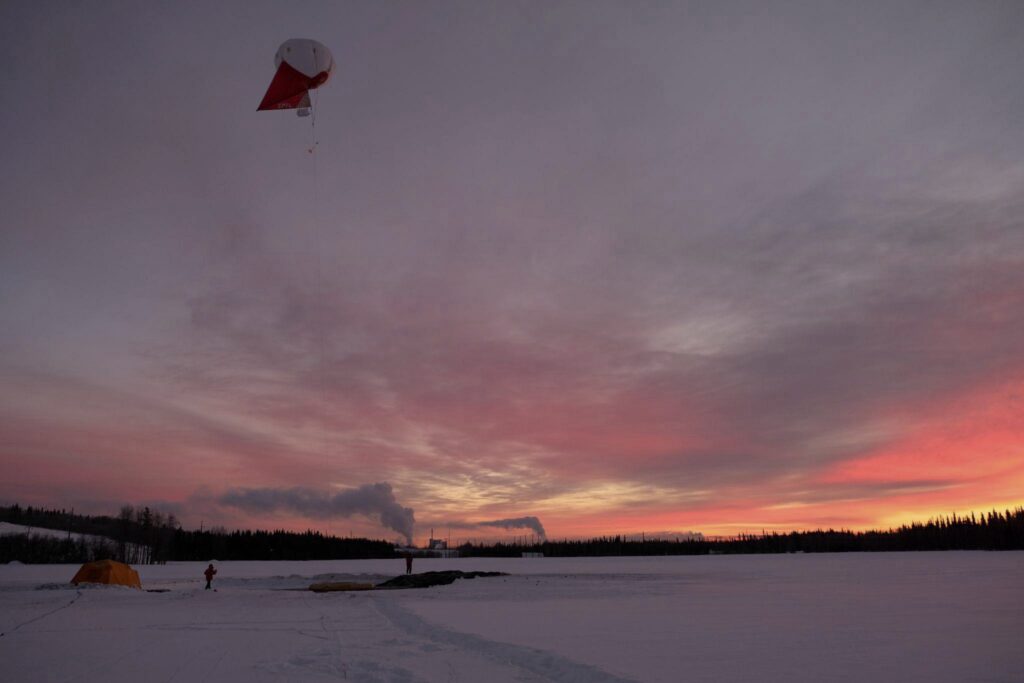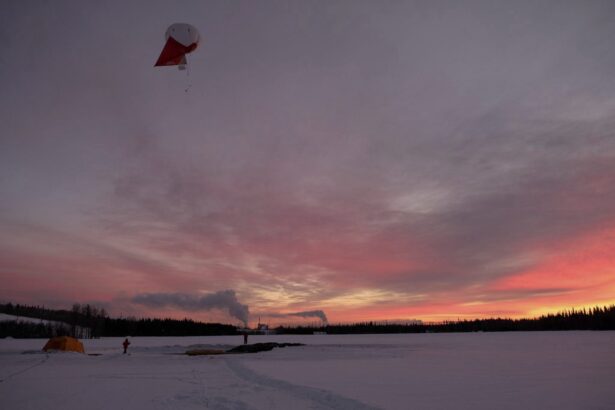By Bill Simpson and Krista Heeringa
Fine particulate matter pollution in high latitude cities like Fairbanks is a serious problem for the health of residents during winter. In addition to meteorological conditions that create strong inversions in Fairbanks during winter, chemical reactions among pollutants behave differently in cold, dark conditions compared with locations that are warmer and have more daylight.
In the U.S., passage of the Clean Air Act in the 1970s led to a strong focus on understanding air pollution. As a result of the act, the U.S. overall has some of the world’s best air quality. However, much of what is known about air pollution in the U.S. is the result of studies that have been conducted in mid-latitudes. As Fairbanks grapples with how to clean up our winter air, research that addresses our unique conditions may help in finding the right solutions.
Over 40 air scientists with different expertise in chemistry and atmospheric science, representing 20 research institutions, came to Fairbanks in early 2022 to carry out the Fairbanks Winter Air pollution study. That was done under the umbrella of the Alaskan Layered Pollution And Chemical Analysis project.
The research campaign focused on a range of questions. Some studies examined the relationship between outdoor and indoor air quality, others examined the vertical layers of pollution created by inversions, while others focused on the chemical composition and reactions of air pollution in Fairbanks’ cold and dark conditions. The “Overview of the Alaskan Layered Pollution and Chemical Analysis (ALPACA) Field Experiment,” which was recently published in the scientific journal ACS ES&T Air, describes the questions that were being asked and what measurements were brought to bear on the problem.
Conducting research in Fairbanks presented some unique challenges for this international team of scientists.
Atmospheric scientist Roman Pohorsky, with the Swiss University EPFL, piloted a tethered balloon to study the vertical distribution of pollution. Obtaining these measurements required long hours of standing outside during the coldest time of year.
“It is the type of job where you are quite static, so keeping warm and focused is not easy in these conditions,” Pohorsky noted.
The cold temperatures were also hard on the equipment and required replacing key components such as the balloon’s liner multiple times. Despite these challenges, Pohorsky and his team gained critical insight into how power plumes interacted with surrounding air. Previously, only models were available to investigate how pollution behaves aloft.

Figure 1: The tethered-balloon from EPFL (Switzerland) carried a payload of instruments sampling and analyzing the composition of the air in real time (particulate matter and gases). The balloon was brought up and down to collect vertical profiles up to a maximum altitude of 1200 ft above ground. The tethered-balloon from EPFL (Switzerland) carried a payload of instruments sampling and analyzing the composition of the air in real time (particulate matter and gases). The balloon was brought up and down to collect vertical profiles up to a maximum altitude of 1200 ft above ground.
Karol Cysneiros with Washington University in St. Louis studies the chemicals in air pollution. Her research in Fairbanks is examining how air pollution changes when it moves from extremely cold outdoor conditions to warm indoor environments.
Preliminary results of Cysneiros’ work indicate that it takes longer than expected for particles in cold temperatures to evaporate when they move indoors, prolonging their potential for holding toxic compounds. Taking these measurements required fabricating a special instrument that samples both particles and gases to analyze their composition.
Cysneiros didn’t sleep much during the six-week research campaign as she monitored her instrument to minimize disruptions in data collection. For her, the effort was worthwhile knowing that the data collected could help address community concerns around air pollution.
“I was really happy to hear that one of the main goals is trying to connect the community to the research itself,” she said.
The tireless efforts of these dozens of scientists have paid off, significantly expanding what is known about how cold and dark conditions affect pollution.
National regulators are also interested in how pollution behaves under cold and dark conditions. The ALPACA study is vividly demonstrating that wintertime Alaska air pollution is different from other airsheds and that solutions and regulations that worked in other locales might not be optimal for Fairbanks.
The results of this study are starting to be published in scientific journals.
The hope is that improving understanding of the pollution and the weather that affects its trapping will help the community to determine appropriate solutions. A number of key early findings have been communicated with Fairbanks through the media, including this and previous columns. Both the links to published results and summary articles can be found on the Fairbanks Winter Air Study website.
This Community Perspective is part of a series of articles on air quality research performed as a part of the University of Alaska Fairbanks-led Fairbanks Winter Air Study (https://fairair.community.uaf.edu). The authors are Bill Simpson and Krista Heeringa from the UAF Geophysical Institute and UAF International Arctic Research Center.


